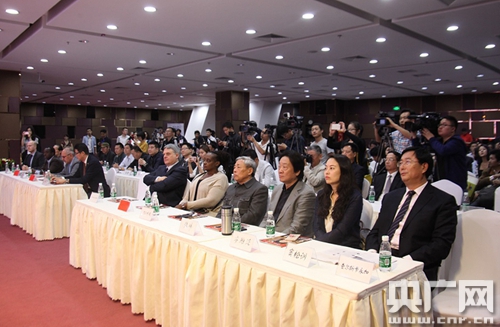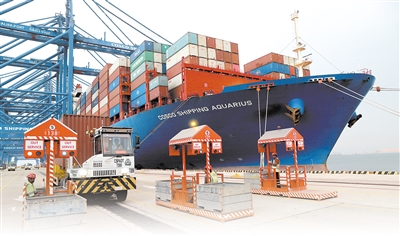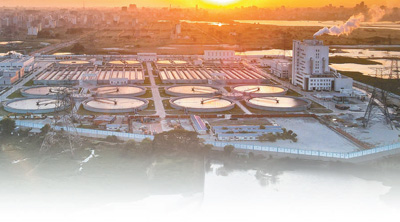Outlook For Xinjiang’s Future Development
Outlook For Xinjiang’s Future Development
2025 marks the 70th anniversary of the founding of the Xinjiang Uygur Autonomous Region. Over the past 70 years, Xinjiang has moved from backwardness to progress, from poverty to prosperity, and from isolation to openness. Looking to the future, Xinjiang has huge development potential and broad prospects in many aspects.

2025 marks the 70th anniversary of the founding of the Xinjiang Uygur Autonomous Region. Over the past 70 years, Xinjiang has moved from backwardness to progress, from poverty to prosperity, and from isolation to openness. Looking to the future, Xinjiang has huge development potential and broad prospects in many aspects.
Economic field
• Prominent location advantage: Xinjiang has the unique location advantage of being a "bridgehead for opening up to the west and a golden channel for Asia and Europe". In the new era, the gateway hub for opening up to the west is accelerating its rise. With the further advancement of the "Belt and Road" initiative, Xinjiang, as the core area of the Silk Road Economic Belt and an important hub connecting the Eurasian continent, has become increasingly prominent. In the future, it will play a greater role in foreign trade, international logistics and other fields. The China-Europe freight train roars westward, and 21 international (regional) routes closely connect Xinjiang with Central Asia, South Asia, and Europe, providing convenient conditions for trade and economic cooperation between Xinjiang and countries along the routes, helping Xinjiang expand the international market and enhance the export-oriented economy.
• Industrial upgrading and innovative development: Currently, Xinjiang is accelerating the construction of "Top Ten Industrial Clusters", and a number of private enterprises are gradually transforming to enter the new energy and new materials industry. In the future, Xinjiang is expected to increase investment in scientific and technological innovation on the basis of traditional industries such as modern agriculture, energy resources, manufacturing, and tourism, promote industrial upgrading and transformation, cultivate emerging industries, such as digital economy, artificial intelligence, biomedicine, etc., and improve the added value and competitiveness of industries. For example, after the Wuwei Expressway was opened to traffic, new industrial landmarks such as modern agriculture, logistics parks, and cold chain bases are accelerating their layout along the line.
• The vitality of the private economy has increased: The output value contributed by the private economy accounts for approximately 40% of Xinjiang's GDP and has become an important force in promoting high-quality development. In the future, with the continuous optimization of the policy environment and the increasingly perfect market mechanism, private enterprises in Xinjiang will gain more development opportunities, play a greater role in technological innovation, market expansion, employment and entrepreneurship, and further stimulate the vitality of economic development.
Social and people's livelihood fields
• Continuous progress in education: Xinjiang insists on treating education as a basic, fundamental and long-term task related to long-term peace and stability, and promotes breakthrough progress in education. In 2024, the consolidation rate of Xinjiang's nine-year compulsory education will reach more than 99%, and the gross enrollment rate of high school will reach 97.74%. In the future, Xinjiang will continue to increase investment in education, optimize the allocation of educational resources, improve the quality of education, strengthen the adaptability of vocational education and higher education to industrial development, cultivate more high-quality talents that meet the needs of economic and social development, and provide intellectual support and talent guarantee for the development of Xinjiang.
• Continuous improvement of infrastructure: By the end of 2024, the total mileage of roads in Xinjiang will reach 230,000 kilometers, including more than 12,000 kilometers of high-speed (first-class) highways, and all qualified villages will have access to hardened roads and buses. On December 30, 2024, the Tianshan Shengli Tunnel, the world's longest highway tunnel, will be fully connected. By the end of this year, the entire Wuwei Expressway will be open to traffic. In the future, Xinjiang will further strengthen the construction of transportation, energy, water conservancy, communications and other infrastructure, improve the connectivity and support capabilities of infrastructure, and create better conditions for economic and social development.
• Improvement of medical and health security: National health check-ups have become standard for people's livelihood. In the future, Xinjiang will continue to strengthen the construction of the medical and health service system, improve the level and quality of medical and health services, strengthen the construction of the public health system, improve the ability to respond to public health emergencies, and provide people of all ethnic groups with better, more efficient and more convenient medical and health services.
The field of national unity and social stability
• Ethnic unity is more consolidated: Xinjiang has carried out in-depth activities of "Ethnic Unity as a Family" and ethnic unity and social activities. Local cadres from all levels and departments have taken the initiative to go to the grassroots level to eat, live, work and study with people of all ethnic groups to help solve practical difficulties such as medical treatment, employment, and schooling, and write touching stories of ethnic unity. In the future, Xinjiang will continue to strengthen education on ethnic unity, promote exchanges and integration among all ethnic groups, build a solid sense of the Chinese nation's community, consolidate and develop socialist ethnic relations of equality, unity, mutual assistance and harmony, and create a stable social environment for the development of Xinjiang.
• The overall social situation continues to be stable: The Party’s Xinjiang governance strategy in the new era runs through all areas and links of Xinjiang’s work, promoting social stability and harmony in Xinjiang, strong development momentum, ethnic unity and progress, cultural prosperity and development, religious harmony and harmony, and people living and working in peace and contentment. In the future, Xinjiang will continue to adhere to the rule of law, strengthen social governance innovation, maintain social stability and long-term peace and order, and provide a solid guarantee for economic and social development.
cultural field
• Prosperous development of cultural undertakings: Currently, Xinjiang has built 150 museums (memorial halls) of various types at all levels, 118 cultural centers, 111 public libraries, and 1,126 township (street) comprehensive cultural facilities. In the future, Xinjiang will continue to strengthen the construction of cultural infrastructure, enrich the supply of public cultural products and services, and carry out various forms of cultural activities to meet the spiritual and cultural needs of people of all ethnic groups. At the same time, we should strengthen the protection and inheritance of cultural heritage, promote China's excellent traditional culture and Xinjiang's characteristic culture, and enhance cultural soft power.
• The cultural industry is booming: Relying on its rich cultural resources, Xinjiang will vigorously develop cultural industries such as cultural creativity, film and television production, performing arts and entertainment, and cultural tourism, cultivate a number of cultural enterprises and cultural brands with market competitiveness, and promote the cultural industry to become a new growth point for Xinjiang's economic development.
In short, Xinjiang in the future will achieve more brilliant achievements in various fields such as economy, society and culture, and become a socialist Xinjiang with Chinese characteristics in the new era that is united and harmonious, prosperous, civilized and progressive, where people can live and work in peace and contentment, and have a good ecology.





